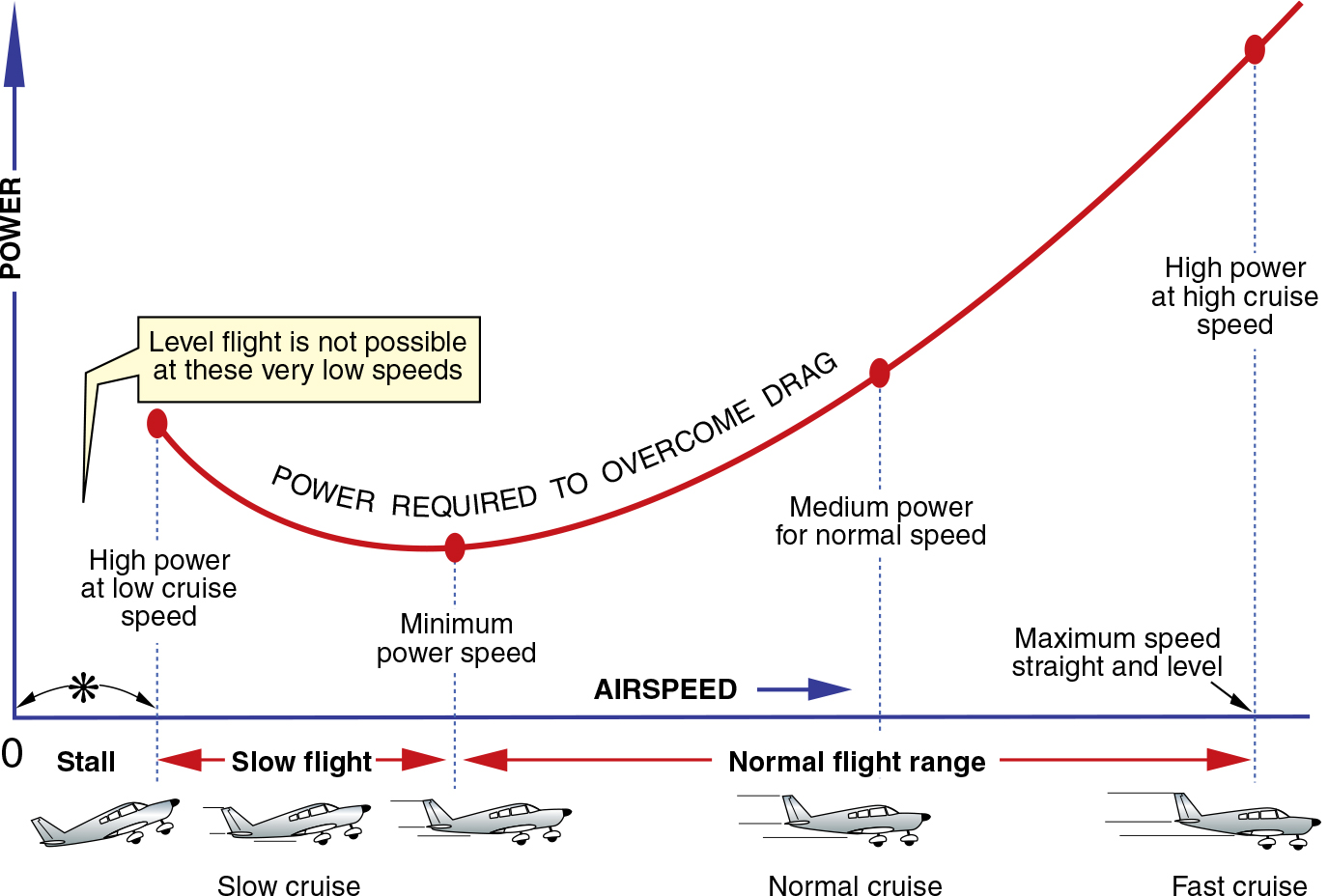Normal cruise involves setting cruise power, holding cruise altitude, and accepting the airspeed that is achieved, which should be close to the figure published in your Pilot’s Operating Handbook. On occasions, however, there is a need to fly at other than normal cruise airspeed. Today, we’ll discuss the basics of changing speeds in straight-and-level flight with an excerpt from The Pilot’s Manual: Instrument Flying (PM-3).
This requires a different pitch attitude and a different power setting. To slow the airplane, the pilot reduces power and gradually raises the pitch attitude to maintain altitude; to increase airspeed, the pilot increases power, and gradually lowers the pitch attitude to maintain altitude.
Once the desired airspeed is achieved, the pilot adjusts the power to maintain it. The precise power required for steady flight will depend upon the amount of total drag, which, in level flight, varies with angle of attack and airspeed. Higher power will be required for:
- high speed cruise (when total drag is high mainly due to parasite drag); and
- low speed cruise (when total drag is high mainly due to induced drag).
Medium power is required for normal cruise. The ASI confirms whether or not correct power is set. The ASI is the primary performance guide to power requirements during level flight if you fly a particular airspeed.
Practicing airspeed changes in cruise is excellent instrument flying practice since pitch, bank (and balance) and power changes must all be coordinated to maintain constant altitude and heading. When the pilot changes power, a single-engined propeller- driven airplane will tend to move around all three axes of movement. If the propeller rotates clockwise as seen from the cockpit (the usual case), adding power will cause the nose to pitch up and yaw left, with a tendency for the airplane to roll left.
The pilot can counteract this by applying forward elevator pressure to prevent the nose pitching up, with right rudder and right aileron pressure to overcome the tendency to yaw and roll left. The converse applies when reducing power, hold the nose up and apply left rudder pressure. Refer to the AI to keep the wings level and hold the pitch attitude, and keep the ball centered.
Some hints on changing cruising speed follow:
- The attitude indicator gives a direct picture of pitch and bank attitudes.
- The ball gives a direct indication of coordination.
- Useful performance instruments are the altimeter and VSI—they ensure altitude is being maintained, and the heading indicator to ensure heading is being maintained.
- The airspeed indicator indicates the power requirements. If too slow, add more power; if too fast, reduce power.
The pilot’s scan rate of the flight instruments during any power change needs to be reasonably fast to counteract the pitch/yaw effects smoothly and accurately. For this reason, it is good to develop the skill of judging power changes by throttle movement and engine sound, rather than only by observation of the power indicator. This allows the pilot to concentrate on the flight instruments until after the power change has been made, at which time a quick glance at the power indicator for fine adjustment suffices.
When you memorize the approximate power settings necessary to maintain the various cruise speeds, then power handling and airspeed changes become simpler to manage.
Small airspeed changes (say five knots either way) can generally be handled by a single small power change, then allowing the airplane to gradually slow down or accelerate to the desired speed. Large airspeed changes, however, are most efficiently achieved within a few seconds by underpowering on the initial power change for a speed decrease, or overpowering on the initial power change for a speed increase. This allows more rapid deceleration or acceleration to the desired speed, at which time the necessary power to maintain that airspeed is set.
Once the desired airspeed is achieved and suitable power is set, the ASI will indicate if further fine adjustment of power to maintain airspeed is required. In level flight, the ASI is the primary guide to power requirements.





